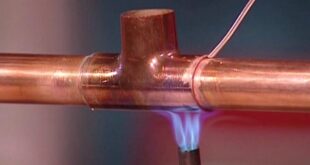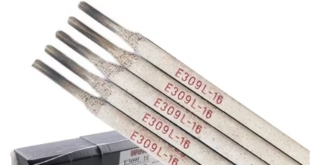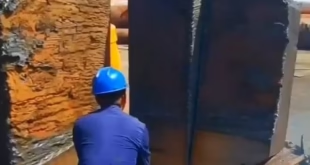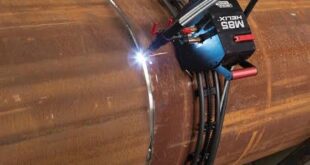The Future of Spot Welding Advancements and Innovations
Introduction
Spot welding is a type of resistance welding where two or more metal sheets are joined together at discrete points by the heat generated from the resistance to an electric current flow. This process is widely used in the manufacturing and construction industries due to its ability to produce high-quality welds with minimum material distortion and low production costs.
Spot welding was first discovered in the early 20th century, and since then, it has evolved into one of the most important welding processes in the industry. In the early days of spot welding, it was mainly used for joining thin sheets of metal, but with the advancement of technology, spot welding can now be used to join thicker sheets of metal, including high-strength steels, aluminum, and other materials.
The importance of spot welding in the manufacturing and construction industries cannot be overstated. Spot welding is widely used in the automotive industry for the production of car bodies, and it is also used in the construction industry for the production of steel structures, pipelines, and other metal components.
Spot Welding Process
Spot welding is a resistance welding process that involves joining two or more metal sheets at discrete points by the heat generated from the resistance to an electric current flow. The basic principle of spot welding is to pass an electric current through the metal sheets at the point where they are to be joined, causing the metal to heat up and melt, forming a weld nugget.
The spot welding process consists of the following steps:
- Clamping: The metal sheets to be joined are clamped between two electrodes.
- Heating: An electric current is passed through the metal sheets at the point where they are to be joined, causing the metal to heat up and melt.
- Cooling: The electric current is stopped, and the metal cools and solidifies, forming a weld nugget.
There are two main types of spot welding machines: pneumatic and hydraulic. Pneumatic machines use compressed air to generate the force required for clamping the metal sheets, while hydraulic machines use hydraulic fluid. Both types of machines are widely used in the industry.
The quality of spot welds depends on several factors, including the welding current, the welding time, the electrode force, the electrode geometry, and the material properties. The welding current and time should be carefully controlled to ensure that the metal sheets are heated to the correct temperature and for the correct amount of time. The electrode force should also be carefully controlled to ensure that the metal sheets are firmly clamped together during the welding process.
Advantages of spot welding include its ability to produce high-quality welds with minimal material distortion, low production costs, and high production speeds. Disadvantages include limited joint strength and the inability to weld dissimilar metals.
Spot Welding Application
Spot welding is a widely used welding process in the manufacturing and construction industries due to its ability to produce high-quality welds with minimal material distortion and low production costs. Some of the common applications of spot welding in different industries include:
- Automotive Industry: Spot welding is widely used in the automotive industry for the production of car bodies. It is also used in the production of fuel tanks, exhaust systems, and other automotive components.
- Electronics Industry: Spot welding is used in the production of electronic components, such as battery packs, circuit boards, and sensors.
- Construction Industry: Spot welding is used in the production of steel structures, pipelines, and other metal components in the construction industry.
- Aerospace Industry: Spot welding is used in the production of aircraft components, such as wings, fuselages, and engine parts.
- Appliances Industry: Spot welding is used in the production of household appliances, such as refrigerators, washing machines, and dryers.
Materials that can be spot welded include low-carbon and high-carbon steels, stainless steels, aluminum, and other metals. The ability to spot weld a wide range of materials makes it a versatile welding process.
Advantages of spot welding over other welding processes include:
- Minimal Material Distortion: Spot welding produces minimal material distortion, making it an ideal process for joining thin metal sheets.
- High Production Speeds: Spot welding is a fast process that can produce multiple welds in a short amount of time.
- Low Production Costs: Spot welding requires minimal equipment and labor, making it a cost-effective welding process.
- Good Quality Welds: Spot welding produces high-quality welds that are strong and durable.
- Reduced Heat-Affected Zone: Spot welding produces a smaller heat-affected zone compared to other welding processes, reducing the risk of material distortion or damage.
Current State of Spot Welding
The spot welding process has been in use for over a century, and its basic principles have remained unchanged. However, with the advent of new technologies, the spot welding process has undergone significant improvements in recent years.
Current spot welding technology includes a range of pneumatic and hydraulic machines, as well as robotic systems that are used in automated manufacturing processes. These machines use advanced control systems that monitor and adjust welding parameters, such as welding current, electrode force, and electrode distance, to ensure the production of high-quality welds.
Emerging trends in spot welding technology include the integration of artificial intelligence (AI) and machine learning (ML) into welding systems. AI and ML can be used to optimize welding parameters based on real-time data feedback, resulting in more efficient and effective spot welding processes.
The development of smart welding systems is also an emerging trend in spot welding technology. Smart welding systems use sensors and control systems to monitor and adjust welding parameters, as well as detect and correct welding defects in real-time.
Improvements in welding techniques and equipment are also ongoing in the field of spot welding. For example, laser spot welding is a new technology that offers several advantages over traditional spot welding, such as increased welding speed, lower heat input, and the ability to weld dissimilar metals.
Advancements in Spot Welding
Spot welding technology has undergone significant advancements in recent years, resulting in improved weld quality, increased production speeds, and expanded application areas. Some of the key advancements in spot welding technology include:
- Improvement of Existing Spot Welding Technology: The traditional spot welding process has been improved through the development of new welding electrodes, improved welding control systems, and the use of advanced materials. These improvements have resulted in more consistent weld quality, increased welding speeds, and reduced production costs.
- Application of New Materials in Spot Welding: New materials, such as high-strength steel, aluminum alloys, and advanced composites, are increasingly being used in the manufacturing industry. Spot welding technology has adapted to these new materials, with advancements in welding electrodes, welding control systems, and welding techniques that allow for the successful welding of these materials.
- Advancements in Automation and Robotics in Spot Welding: Automation and robotics are increasingly being used in manufacturing processes, including spot welding. Advanced robotics systems can be programmed to perform a range of spot welding tasks, resulting in increased production speeds, reduced labor costs, and improved weld quality.
- New Applications of Spot Welding in Different Industries: Spot welding is being applied in new areas, such as the medical device industry, where it is used to join small, delicate components. Spot welding is also being used in the production of renewable energy components, such as wind turbine blades.
Innovations in Spot Welding
In addition to the advancements in existing spot welding technology, there are also several new spot welding techniques and processes that are being developed. These innovations include:
- Advancements in Laser Spot Welding: Laser spot welding is a relatively new technique that uses a laser beam to melt and fuse materials together. This technology has several advantages over traditional spot welding, including faster welding speeds, less heat input, and the ability to weld dissimilar materials. Recent advancements in laser spot welding include the development of new laser sources, such as fiber lasers, and the use of online monitoring systems to ensure weld quality.
- Application of New Materials in Spot Welding: The use of new materials in manufacturing has also led to the development of new spot welding processes. For example, friction spot welding is a technique that can be used to join dissimilar materials, such as aluminum to steel. Ultrasonic spot welding is another technique using ultrasonic waves that is being developed for joining dissimilar materials, such as plastics to metals.
- New Applications of Spot Welding in Different Industries: Spot welding is being applied in new areas, such as the automotive industry, where it is being used to join lightweight materials for increased fuel efficiency. Spot welding is also being used in the aerospace industry to join complex, lightweight components for aircraft.
- Advancements in Welding Equipment and Technology: Advances in welding equipment and technology are enabling faster and more efficient spot welding processes. For example, advanced welding robots can perform spot welding tasks with greater precision and speed, while online monitoring systems can detect and correct welding defects in real time.
Future Implications of Spot Welding
The advancements and innovations in spot welding have significant implications for the manufacturing and construction industries. Some potential impacts of these advancements include:
- Improved Efficiency and Productivity: Advancements in spot welding technology, including automation and robotics, are expected to result in increased production speeds, reduced labor costs, and improved weld quality. This increased efficiency and productivity can help companies remain competitive in their respective industries.
- New Capabilities and Applications: The application of new materials and the development of new spot welding processes and techniques are opening up new possibilities for the manufacturing and construction industries. For example, the use of laser spot welding allows for the welding of dissimilar materials, which was previously difficult to achieve. This capability opens up new applications, such as the welding of lightweight materials for the automotive and aerospace industries.
- Increased Sustainability: The use of spot welding in the manufacturing of lightweight materials for vehicles and other products can contribute to increased fuel efficiency and reduced carbon emissions. Additionally, advancements in welding equipment and technology are enabling more efficient use of energy and resources in the welding process.
However, the future of spot welding also presents some challenges and opportunities for the manufacturing and construction industries. These include:
- Training and Education: As spot welding technology continues to advance, the need for skilled welders and technicians who can operate and maintain advanced welding equipment and technology will also increase. This requires investments in training and education programs to ensure a skilled workforce.
- Quality Control and Safety: As welding processes become more automated and complex, the need for quality control and safety measures also increases. The development of online monitoring systems and other technologies can help to address these concerns.
- Integration with Industry 4.0: The integration of spot welding with Industry 4.0 technologies, such as the Internet of Things (IoT) and artificial intelligence, can offer new opportunities for automation and data-driven decision making. However, this integration also requires investments in technology infrastructure and data security measures.
FAQs
What are the 3 stages of spot welding?
The three stages of spot welding are clamp stage, weld stage, and forge stage. In the clamp stage, the two metal pieces to be welded are clamped together. In the weld stage, a high current is passed through the two pieces, causing them to melt and fuse together. In the forge stage, a force is applied to the weld area to compress and shape the melted metal.
Why use a spot welder?
Spot welding is often used in the manufacturing and construction industries because it is fast, efficient, and cost-effective. Spot welders can create strong, durable welds with minimal distortion and can be used to weld a variety of materials.
How strong is a spot weld?
The strength of a spot weld depends on several factors, including the type of material being welded, the thickness of the material, and the welding parameters used. However, spot welds can be very strong and durable, often withstanding significant stress and load.
What are types of spot welding?
The two most common types of spot welding are resistance spot welding (RSW) and laser spot welding. RSW uses electrical resistance to generate heat and melt the metal pieces together, while laser spot welding uses a high-powered laser to melt and fuse the metal.
What is the principle of spot welding?
The principle of spot welding is to use heat and pressure to melt and fuse two metal pieces together at a specific point or “spot.” This is achieved by passing a high current through the metal pieces and applying pressure to the weld area.
What are two advantages of spot welding?
Two advantages of spot welding are minimal distortion and the ability to weld a variety of materials. Spot welding creates minimal distortion or warping in the metal, making it ideal for delicate or complex parts. It can also be used to weld a variety of materials, including stainless steel, aluminum, and copper.
Which material is best for spot welding?
The material that is best for spot welding depends on the specific application and welding parameters used. However, spot welding is commonly used to weld materials such as steel, aluminum, and copper.
What temperature is spot welding?
The temperature of spot welding depends on the welding parameters used, such as the current and welding time. In general, spot welding temperatures can reach up to 3000 degrees Celsius.
What is the maximum thickness for spot welding?
The maximum thickness for spot welding depends on the type of material being welded and the welding parameters used. However, spot welding is commonly used for materials with a thickness of up to 5mm.
What electrode is used in spot welding?
In resistance spot welding, copper electrodes are commonly used to transfer the current and generate the heat required for welding.
Why water is used in spot welding?
Water is used in spot welding to cool the electrodes and prevent overheating during the welding process.
What is spot welding parameters?
Spot welding parameters are the specific settings and values used during the welding process, including current, time, force, and electrode size and shape.
What is the difference between seam welding and spot welding?
Spot welding is a type of resistance welding that joins two metal surfaces together at a specific point using a high current to generate heat. Seam welding, on the other hand, is a continuous process used to join two overlapping metal sheets along a seam. Seam welding is commonly used in the manufacture of fuel tanks, pipes, and other structures that require a continuous seam weld, while spot welding is often used in the automotive industry for joining body panels. Therefore, the key difference between the two methods is the area of metal that is welded.
Conclusion
In conclusion, spot welding is a critical welding process that plays a significant role in the manufacturing and construction industries. Advancements and innovations in spot welding technology have the potential to significantly improve efficiency, productivity, and sustainability. The development of new spot welding techniques, materials, and automation technology offers new opportunities for growth and innovation.
However, to realize the full potential of these advancements, the industry must address challenges such as training and education, quality control and safety, and integration with Industry 4.0. Investment in research and development, infrastructure, and education and training programs will be crucial to the success of the industry in the future.
 Welding of Welders All about Welding and Welders
Welding of Welders All about Welding and Welders




